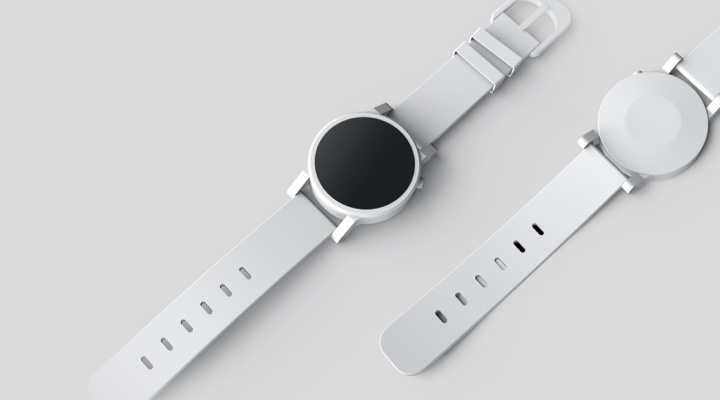Survey vs. Questionnaire: What’s the Difference?

Whatever business you have, you probably need to gather data. This is exactly why you must understand the intricacies between survey vs questionnaire which could impact the quality of your research and the insights you gather.
Millions of people are confused about what the two are so if you are one of them, do not worry. After all, these terms are often used interchangeably. That said, you must know that they refer to two very different concepts.
What is a Questionnaire?

This research instrument consists of a set of questions. These are essential to get important information from respondents, whoever they may be. Think of your questionnaire as a tool used to collect data on various topics such as customer satisfaction or employee feedback.
Before continuing, it’s crucial to remember that not all questionnaires are the same. They can include both open-ended and closed-ended questions. These two make the collection of qualitative and quantitative data possible.
Types of Questions in a Questionnaire
Closed-Ended Questions
You must use this if you want to give respondents predefined answer choices. Some examples are:
● Multiple-choice questions● Likert scale questions
● Yes/no questions.
Open-Ended Questions
Need to understand thoughts, feelings, and experiences better? Then an open-ended question will help your respondents to answer in their own words. At the end of the day, this will provide richer data.
Applications of Questionnaires
Did you know that questionnaires are immensely versatile tools? You can use questionnaire templates for any purpose you can think of. This is why questionnaires are non-negotiables for fields like:
● Market research
● Social sciences
● Healthcare
● Education
It can even gather specific information for things like the following:
● Customer preferences
● Employee satisfaction
● Patient health histories
For instance, a company might use a questionnaire to collect feedback on a new product, and a healthcare provider might use one to gather patient information.
What is a Survey?

A survey is a broader research method. It covers the entire process of collecting up to interpreting the data from a group of respondents. This already includes a questionnaire as one of its components. However, it may also involve other elements such as sampling, data analysis, and many others.
Components of a Survey
Questionnaire
As mentioned above, these are the set of questions used to gather data from respondents. It is a very important core component of a survey.
Sampling
Sampling is the process of selecting a representative group of respondents from a larger population. A successful sampling ensures survey results are generalisable to a broader population.
Data Collection Methods
Surveys can be conducted using many methods. It could be done online. Some companies even prefer to do a phone call. Others insist on face-to-face interviews. The final choices really depends on what the researcher wants to accomplish. The resources available for the researcher can also affect this.
Data Analysis
Data analysis is the final step in surveys and this includes organising the data. After this, it is assessed and finally, interpreted to gain a meaningful conclusion. Usually, this step involves statistical analysis to make way for the identification of relationships in the data.
Applications of Surveys
Surveys are used in a wide range of contexts. Academic researchers do it, and even businesses and governments do it as well since they are valuable if people want to get to know broader trends, behaviours, and opinions in a group.
To put things into context, a company might make a customer satisfaction survey if the human resources department wants to know the areas for improvement in their hiring process. This would help them improve it.
Key Differences Between Surveys and Questionnaires
We’ve already established that a questionnaire is a tool for collecting data using a set of questions. Meanwhile, a survey is a comprehensive research method which also includes the use of questionnaires alongside other processes to interpret data.
Take a look at the key differences between the two:
Scope
Questionnaires are limited to the set of questions asked to respondents since they are tools for data collection. However, surveys encompass the entire research process like the design of the questionnaire, data collection, data analysis, and interpretation of the answers.
Purpose
Questionnaires can gather specific information from individuals which is very useful for purposes like collecting demographic data and a lot more.
Surveys, on the other hand, are aimed at understanding bigger trends. It can even know the majority behaviours and opinions in group settings. This is crucial in forecasting trends instead of individual insights.
Data Analysis
In questionnaires, the data collected is raw and must be processed and analysed separately since it’s not included in the analysis process itself. Surveys already cover analysis and other methods.
Examples of Use
Need specific information? Then a questionnaire is best to use. Survey should be for more comprehensive research projects like market research.
Designing Effective Questionnaires and Surveys
Did you know that making effective questionnaires and surveys requires attention to detail? Here are some tips for designing the two.
Designing a Questionnaire
Define Objectives
Clearly put into words what is the purpose of the questionnaire survey and the information you aim to collect.
Choose Question Types
Choose the appropriate question types (closed-ended or open-ended) based on the information you need.
Keep it Simple
Nobody wants to answer complicated questionnaires so remember to use clear and concise language. This will ensure respondents understand the questions.
Pilot Test
A lot of businesses fail to do this, but conducting a pilot test to identify any issues with the questions and make necessary adjustments will catch any errors before it goes out to the public.
Designing a Survey
Define Research Goals
Answer first what are the research objectives and the questions you want to answer for the survey questionnaire.
Develop a Sampling Plan
Once you already have a goal in mind, determine the target population and select a representative sample.
Choose the Data Collection Methods
Keep in mind that the data collection method should be based on the research goals and target audience.
Analyse Data
As mentioned above, use statistical analysis to interpret the data. This will allow you to draw conclusions that you can take advantage of in many ways.
So, do you need a questionnaire or a survey?
Learning and understanding the distinction between a survey vs questionnaire is very important since without this knowledge, you cannot effectively design and conduct any research projects. Whichever or the two options you plan on using, SurveyPluto can help. Get started using our free survey template today.
 Back to Blog Home
Back to Blog Home







